The 48th International Viola Congress took place in Salaya, Thailand from June 6th – 10th, 2023. With a bit longer delay than usual, daily blog reports are delivered to you by Karin Dolman [kd] and Kristofer Skaug [ks].
Day 2: Wednesday, June 7th, 2023
<previous day> <next day>
[kd] At 9.30 about 25 violists gathered in the A building for my Workshop Create your own Cadenza. In October last year we did this workshop at Codarts University of the Arts Rotterdam, so I could reuse the materials, such as the custom designed sketchbook. In half an hour I outlined some historical points of the cadenza, and together we brainstormed some possible features and purposes of a cadenza. Next we split not four smaller groups and started actually working on cadenzas. It was very nice to see that the groups worked on totally different options to start a cadenza. We will see how we will proceed in the next session (Saturday morning!).
 [ks] At noon we both attended the IVS Annual Delegates’ meeting, with the IVS board and representatives of the boards of the national societies (member sections). The IVS board had prepared well, with working meetings and “teambuilding” activities for several days ahead of the Congress. A PowerPoint presentation was provided to keep structure in the meeting. The meeting covers broadly speaking two main topics: Matters concerning the IVS board itself, activities, financial reports and future plans; and secondly the achievements, plans and concerns of the member sections.
[ks] At noon we both attended the IVS Annual Delegates’ meeting, with the IVS board and representatives of the boards of the national societies (member sections). The IVS board had prepared well, with working meetings and “teambuilding” activities for several days ahead of the Congress. A PowerPoint presentation was provided to keep structure in the meeting. The meeting covers broadly speaking two main topics: Matters concerning the IVS board itself, activities, financial reports and future plans; and secondly the achievements, plans and concerns of the member sections.
The IVS would like to improve the scope and functionality of their website so that it can fulfil a more central hub / portal role in the online Viola world. Another area where the IVS needs help is in the production of the well known webcasts. it was generally agreed that activities like this need to be supported by working groups manned by volunteers from member sections.
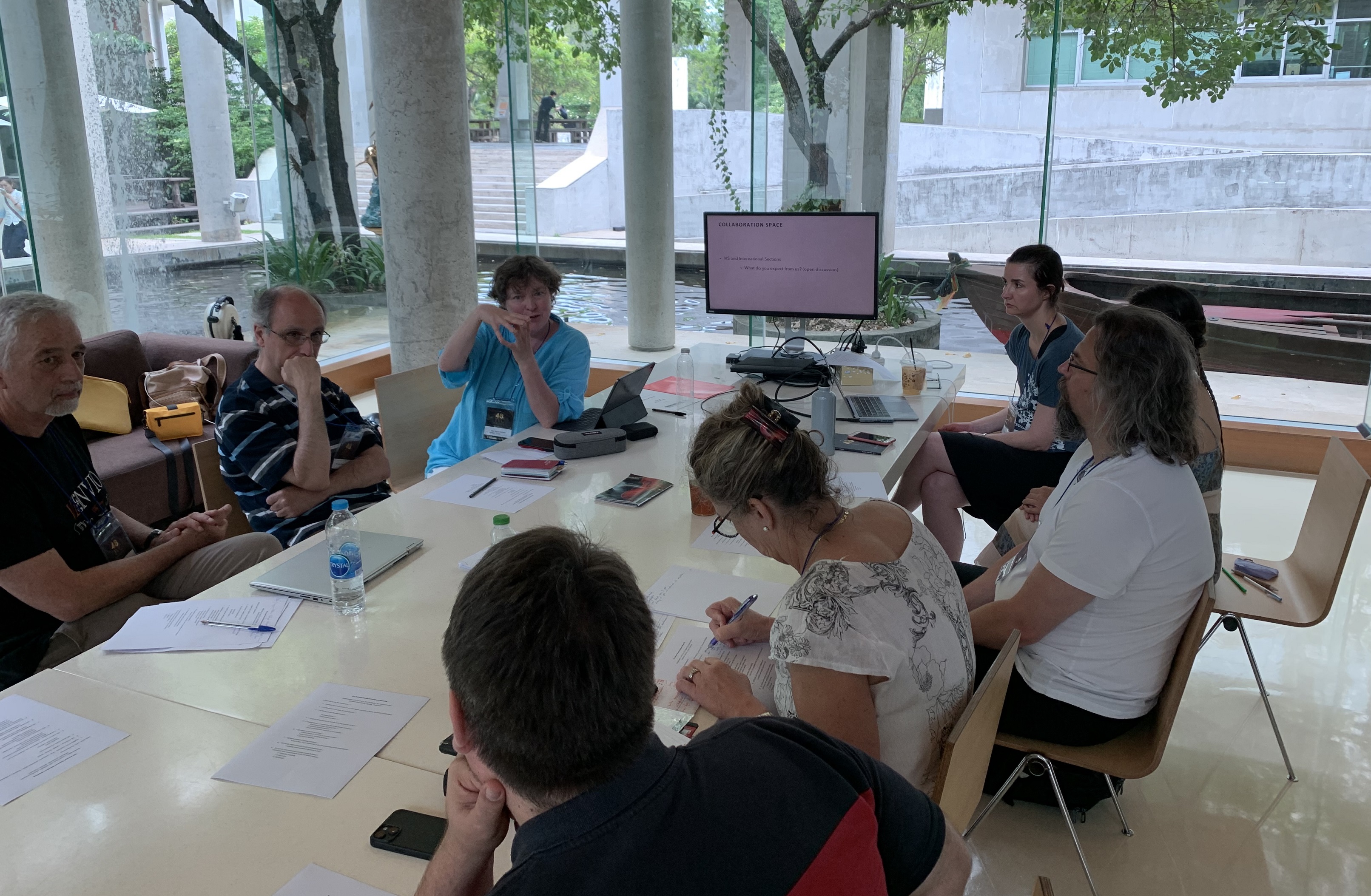 From the member section side it is seen as positive that, for the first time this year, the Delegates’ meeting included an official delegate from France, China, and Norway. On the other hand, many sections have problems recruiting and retaining members, and the situation is even worse when it comes to volunteering for tasks. It is pointed out that an IVS forum / workgroup might be helpful for sections to exchange more detailed experiences with recruiting on a semi-annual basis.
From the member section side it is seen as positive that, for the first time this year, the Delegates’ meeting included an official delegate from France, China, and Norway. On the other hand, many sections have problems recruiting and retaining members, and the situation is even worse when it comes to volunteering for tasks. It is pointed out that an IVS forum / workgroup might be helpful for sections to exchange more detailed experiences with recruiting on a semi-annual basis.
Of course, this interesting but long meeting session meant having to miss a lot of stage action at the congress. Based on reliable and very enthusiastic second-hand accounts, I will nevertheless mention the De La Cruz Viola and marimba duo, consisting of a married couple from the Philippines. Both their music and performance was received very well.
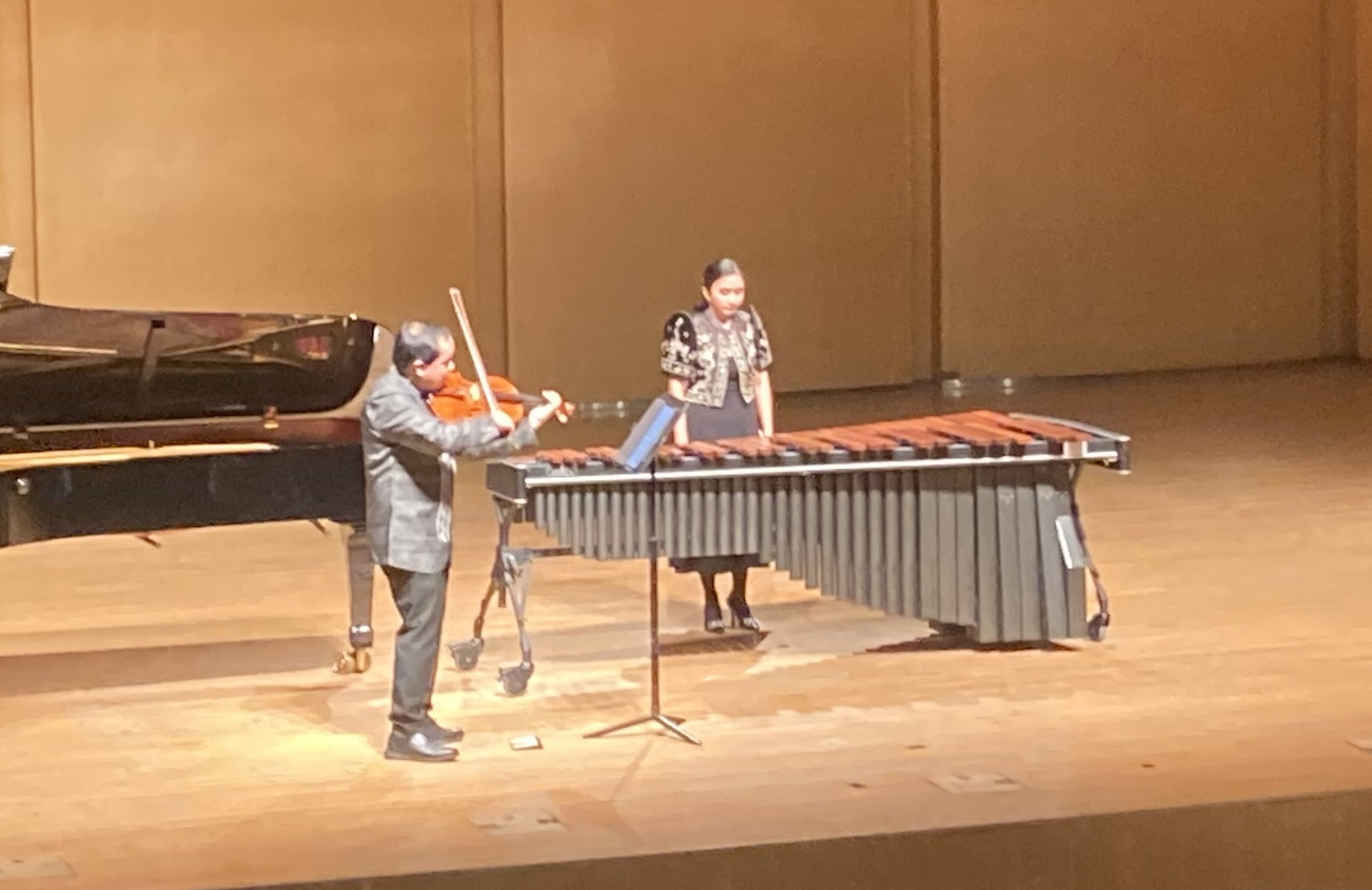 [kd] In the afternoon, Vinciane Béranger gave a lecture about the manuscripts of Rebecca Clarke. Recently, a lot of information about Clarke has been made accessible for the community to explore, including the manuscripts and personal notes that Clarke made in her playing scores. It is so interesting to be able to time travel a bit and have the atmosphere of 100 years ago. Extra appreciated from our Dutch vantage point is that Vinciane performed the score fragments using the Erasmus viola (built, as some of you may recall, during IVC2018 in Rotterdam), traveling to Salaya with one of the students of Codarts to this congress to be played. The Erasmus foundation gave financial support for this project.
[kd] In the afternoon, Vinciane Béranger gave a lecture about the manuscripts of Rebecca Clarke. Recently, a lot of information about Clarke has been made accessible for the community to explore, including the manuscripts and personal notes that Clarke made in her playing scores. It is so interesting to be able to time travel a bit and have the atmosphere of 100 years ago. Extra appreciated from our Dutch vantage point is that Vinciane performed the score fragments using the Erasmus viola (built, as some of you may recall, during IVC2018 in Rotterdam), traveling to Salaya with one of the students of Codarts to this congress to be played. The Erasmus foundation gave financial support for this project.
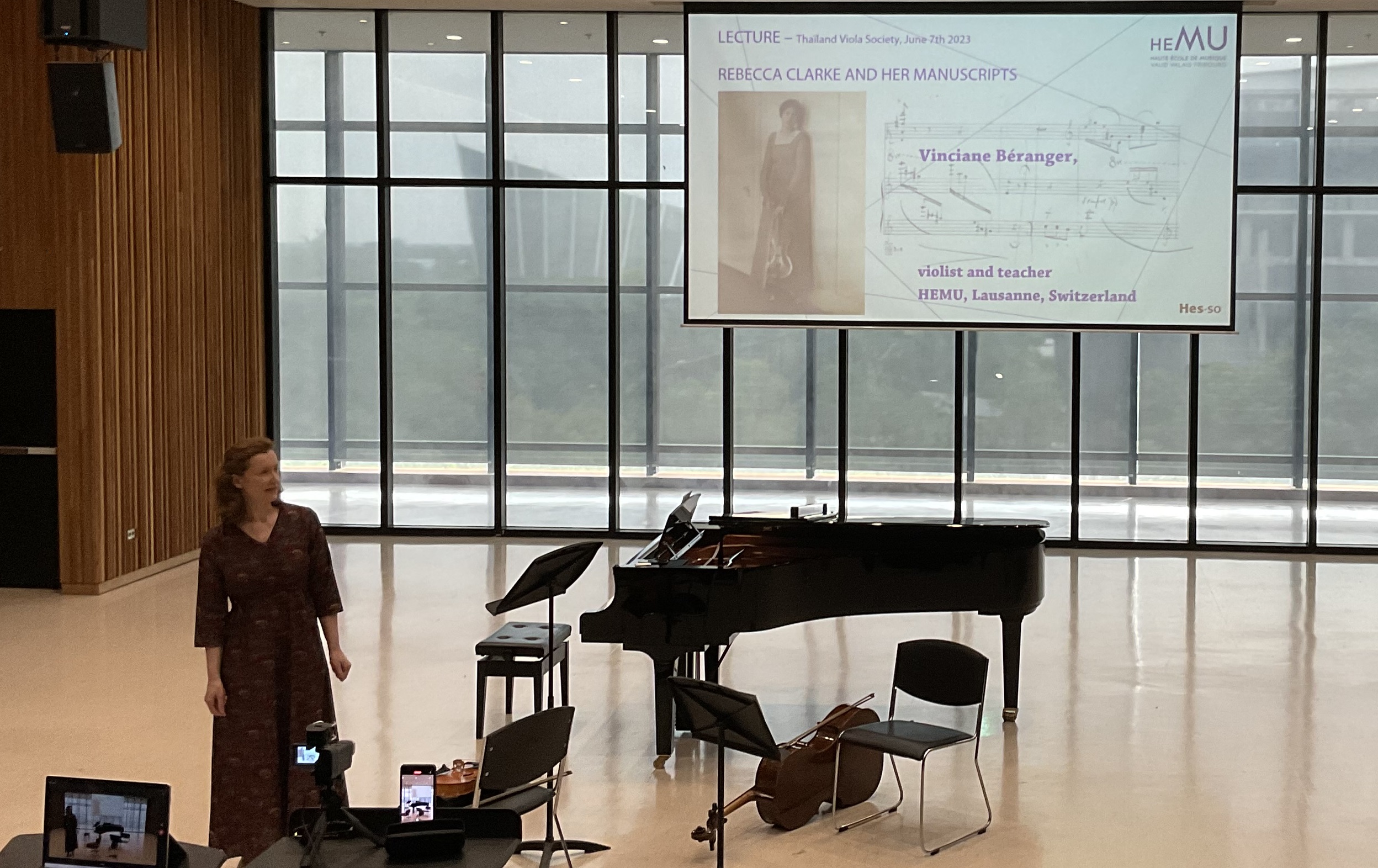 The next recital program by Daphne Gerling had the title: Encircling – Repertoire from women composers contemporary with Rebecca Clarke. Since I had to walk back to the Main Auditorium, I missed the first piece, the Passacaglia on a Theme by Tallis, by Rebecca Clarke herself. The rest however offered surprising pieces which should be played more often. The sonata by Dorothy Fox was a beautiful dialog between the viola and piano. It was built on thirds and seemed well thought through, and probably well playable for both instruments. The Fantaisie by Helene Fleury-Roy was a one-movement pièce de concours containing all elements that such a piece should have: lines, scales, arpeggios, to show the jury the technical prowess of the player. Daphne delivered it all with a strong advocacy.
The next recital program by Daphne Gerling had the title: Encircling – Repertoire from women composers contemporary with Rebecca Clarke. Since I had to walk back to the Main Auditorium, I missed the first piece, the Passacaglia on a Theme by Tallis, by Rebecca Clarke herself. The rest however offered surprising pieces which should be played more often. The sonata by Dorothy Fox was a beautiful dialog between the viola and piano. It was built on thirds and seemed well thought through, and probably well playable for both instruments. The Fantaisie by Helene Fleury-Roy was a one-movement pièce de concours containing all elements that such a piece should have: lines, scales, arpeggios, to show the jury the technical prowess of the player. Daphne delivered it all with a strong advocacy.
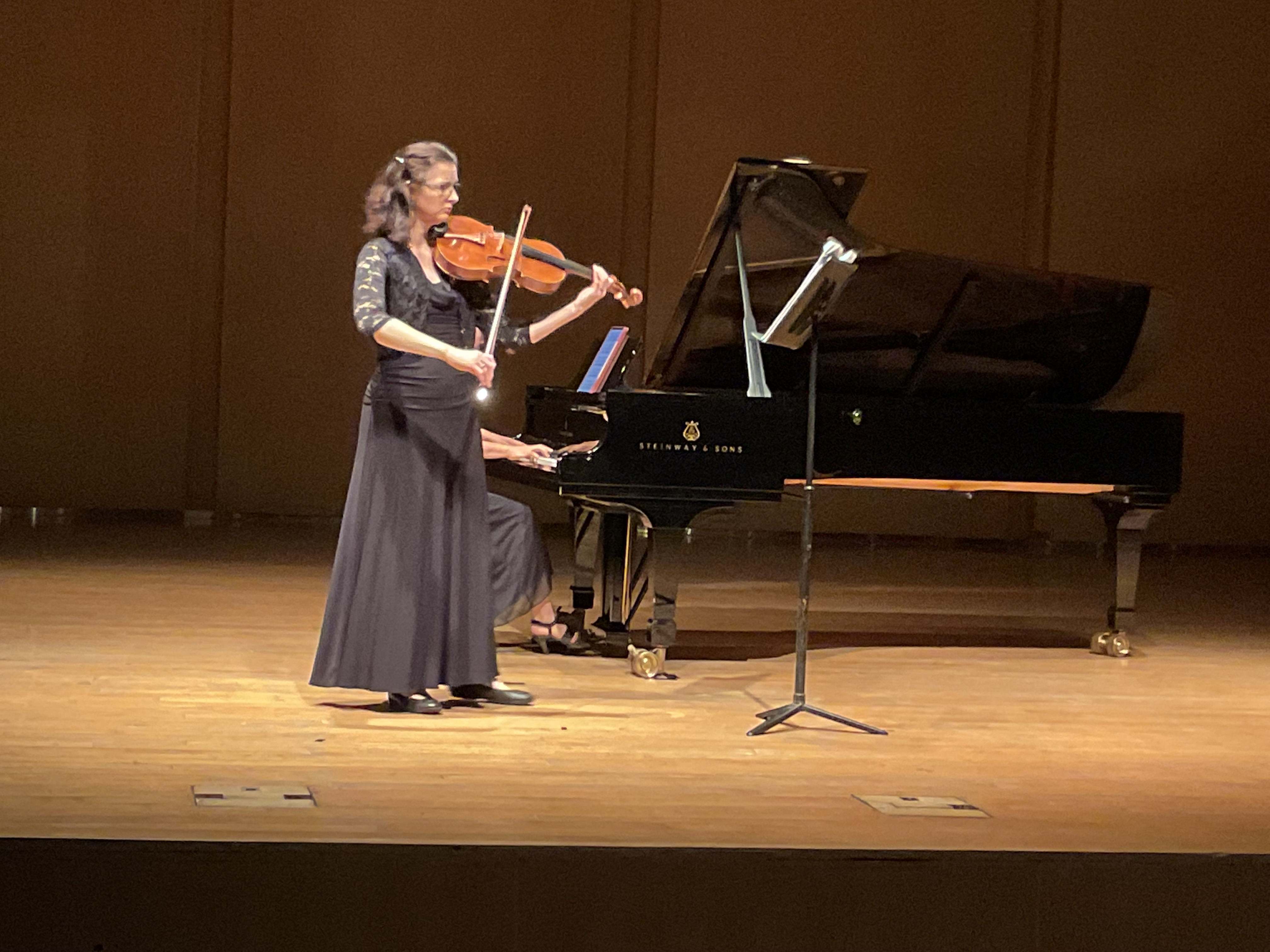 After an intermission, the recital continued with a sonata from 1925 by Marcelle Soulage. What a great sonata, with such a joyful 2nd movement. The 3rd movemtn starting off with a cadenza of the viola and then the capricious 4th movement with all French fin de ciecle elements, again a lot Asian-influenced moments. The viola part speaks to you, and Daphne Gerling is a very good ambassador for this program. so a big thank you to Daphne and her pianist Tomoko Tashiwagi for bringing such beautiful programs to the congress! Judging by the applause, clearly I was not the only one who greatly enjoyed this program.
After an intermission, the recital continued with a sonata from 1925 by Marcelle Soulage. What a great sonata, with such a joyful 2nd movement. The 3rd movemtn starting off with a cadenza of the viola and then the capricious 4th movement with all French fin de ciecle elements, again a lot Asian-influenced moments. The viola part speaks to you, and Daphne Gerling is a very good ambassador for this program. so a big thank you to Daphne and her pianist Tomoko Tashiwagi for bringing such beautiful programs to the congress! Judging by the applause, clearly I was not the only one who greatly enjoyed this program.
[ks] As a quite logical and satisfying conclusion to this afternoon’s Rebecca Clarke theme, Bangkok native Patcharaphan Khumprakob gave an integral rendition of the sonata. She has a Master’s degree from Salzburg to her name, and has gained professional experience in Vietnam and Singapore. On Friday (Day 4 of the Congress), she will perform the Bartók Viola concerto for us with the Mahidol Symphony Orchestra. No wonder, therefore, that she showed up again on stage only an hour or so later in Ettore Causa’s masterclass to get some feedback from him on Bartók.
 Meanwhile, over in the other recital hall, Ames Asbell continued her exploration of the ensemble format viola, tenor voice and piano,.with Richard Novak and Joey Martin in the latter two roles. Under the new name Purgatory Creek Trio, this group previously also performed at the IVC in Poznan in 2019. Encapsulated in a Lecture-recital format, the new commissioned work Stations of Mychal (2020) by Kenny Salfen was premiered to significant acclaim of those present, unfortunately I missed it.
Meanwhile, over in the other recital hall, Ames Asbell continued her exploration of the ensemble format viola, tenor voice and piano,.with Richard Novak and Joey Martin in the latter two roles. Under the new name Purgatory Creek Trio, this group previously also performed at the IVC in Poznan in 2019. Encapsulated in a Lecture-recital format, the new commissioned work Stations of Mychal (2020) by Kenny Salfen was premiered to significant acclaim of those present, unfortunately I missed it.
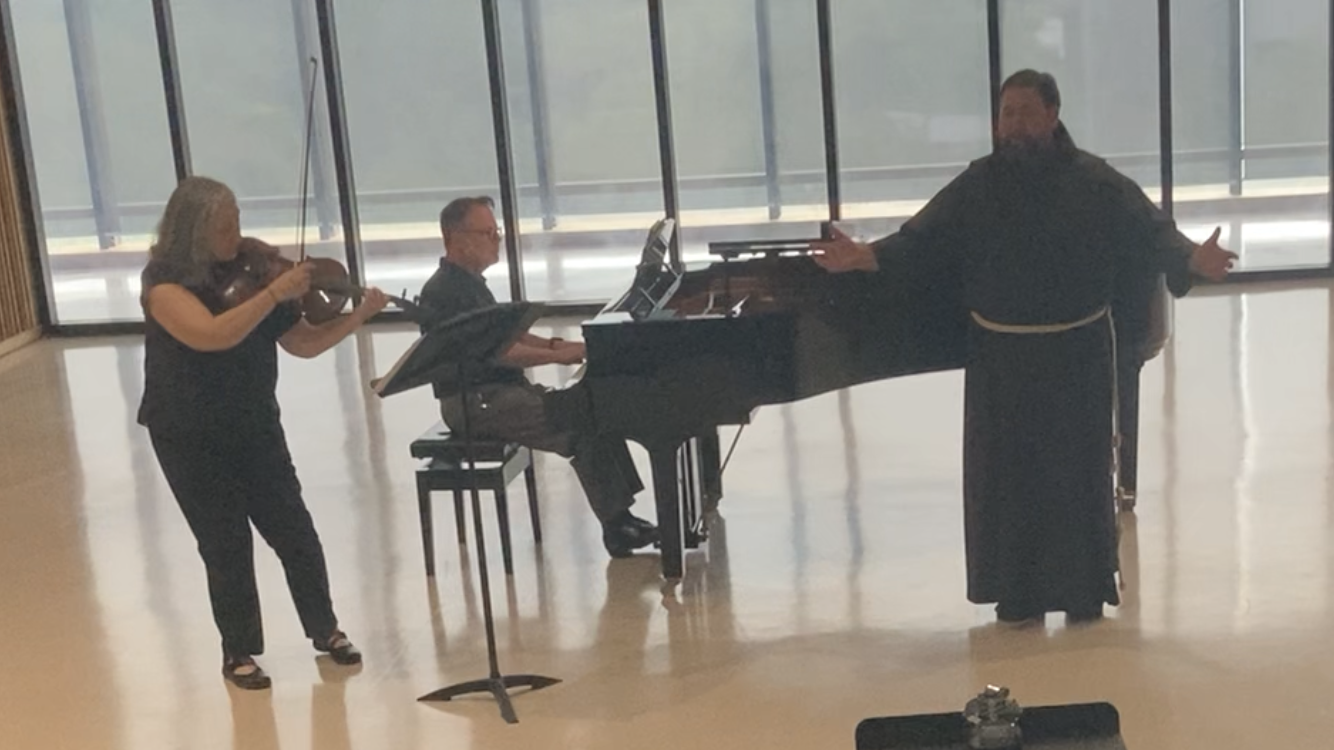 [kd] Violist and musicologist Andrew Filmer is (in our European eyes) practically one of the locals, based in Malaysia. As one of the Featured Artists for the Congress, he has the lead role in the “prime time” evening concert today. He introduces himself as someone who likes to talk, and he even throws in some quite witty viola jokes.
[kd] Violist and musicologist Andrew Filmer is (in our European eyes) practically one of the locals, based in Malaysia. As one of the Featured Artists for the Congress, he has the lead role in the “prime time” evening concert today. He introduces himself as someone who likes to talk, and he even throws in some quite witty viola jokes.
Together with guitar player Matthew Marshall, he plays pieces by Anthony Ritchie, and a world premiere of “Breaking Free” by Sulwyn Lok. In this latter piece, the viola has scordatura like a viola d”amore minor. Which makes him an accompanist as well. So you can have three players with only two people. It really works very well.
 [ks] The next piece by Joel Hoffman is played by the composer’s violinist son Benjamin Hoffman and daughter in-law, Irene Kim, on the piano. So actually a slightly unsettling no-Viola moment here, were it not for the brilliant musicianship of this recently-wed duo, which goes by the very cool ensemble name Brightfeather.
[ks] The next piece by Joel Hoffman is played by the composer’s violinist son Benjamin Hoffman and daughter in-law, Irene Kim, on the piano. So actually a slightly unsettling no-Viola moment here, were it not for the brilliant musicianship of this recently-wed duo, which goes by the very cool ensemble name Brightfeather.
It plays out as a very congenial chamber music evening with different combinations of viola, violin, guitar and piano. The finale from Ignaz Lachner’s Trio no.1 (op.37) for viola, violin and piano put a jubilant and rousing ending to this programme and as well to the 2nd day of this congress.
We’re only just getting warmed up, three days to go!
Karin & Kristofer
<previous day> <next day>
